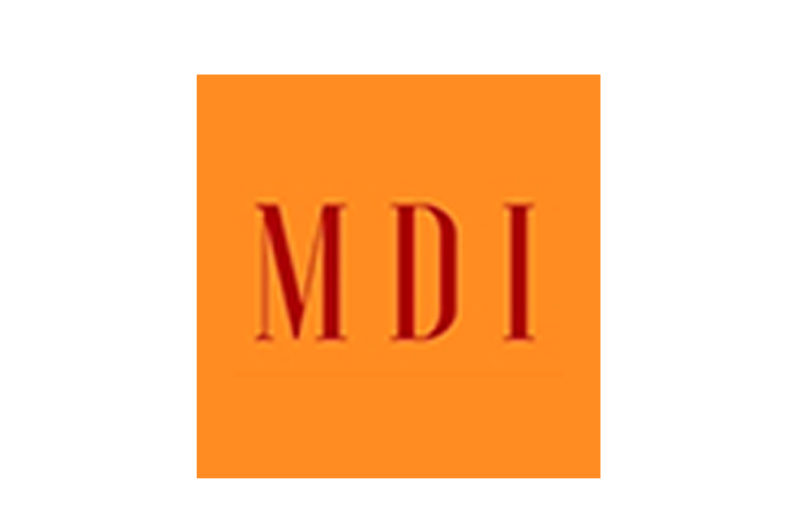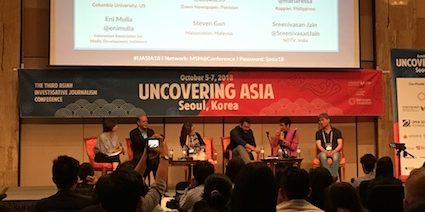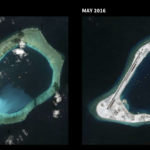In 2015, Supriyanto, an Indonesian sailor suddenly died on a Taiwanese vessel while on board fishing in the middle of the Pacific Ocean, a few hundred kilometers from Micronesia. In three clips later provided by his cousin, Supriyanto appeared to have a swollen face and a wound on his head – signs of having been battered. Other fishermen on board said he was repeatedly abused by a Taiwanese captain until death.
Supriyanto’s death was certainly shocking, but not to fisheries observers, who often spend months on end in international waters, witnessing gruesome stuffs. Taiwanese independent newsroom The Reporter has been following cold cases of labor abuse at sea and accounts of fisheries observers for a while until they got hold of a few documents regarding Supriyanto’s death – they decided to launch an investigation with Indonesia newsroom TEMPO.
After two months interviewing crew members, recruiting agents, boat owners, the two newsrooms discovered not just one Supriyanto, but thousands of Indonesian migrant workers being tricked into working illegally for Taiwanese vessels at the far sea. Without a visa, migrant documents and salaries being withheld, these seamen are forced to work over 20 hours a day, often starved, regularly beaten, sometimes given electric shocks and like Supriyanto, tortured to death.

Slavery at Sea, a joint investigation of TEMPO (Indonesia) and The Reporter (Taiwan) is a great example of cross-border reporting, when the local story is in fact a part of a bigger story of an international supply chain. Using this approach, many Vietnam-related topics could be tackled, from labor export, human trafficking, transnational sex abuse criminals to mispractice in FDI sectors. Vietnamese migrants, though not in the same large number as Indonesians, are also working illegal and being abused on Taiwanese boats, according to Sherry Lee, executive director of The Reporter, a lead reporter for the Slavery at Sea project. The Global Slavery Index 2018 listed electronics, garments, seafood, cocoa and sugarcane as top five industries most subjected to modern slavery – three of which are Vietnam’s top FDI sectors.
As newsrooms across Asia are collaborating more often than ever, here are a few tips from the Third Asian Investigative Journalism Conference for journalists when it’s time to look outside Vietnam.
Master the International Trade Language
“International trade works because there is an international language used worldwide,” said Giannina Segnini, a lecturer at Columbia Journalism School at one of Uncovering Asia 2018’s workshop.
For starters, Segnini recommended a few key tools, including the HS code, the Bill of Lading, containers’ BIC code and the IMO ship code.
“Everything we can touch has an HS code,” Segnini said. With this code, journalists can easily obtain trade data, which are updated regularly at the UN Comtrade Database, The Asia Pacific Energy Portal, or the Korea Customs Portal. According to Segnini, any anomaly in the trade data can be the next clue to your story. “You won’t find an HS code for cocaine,” she said, “but it turns out cocaine producers need potassium permanganate to make cocaine. So use the UN Comtrade Database to see all the potassium permanganate imports that Colombia reported to the UN.” In this case, when compared to what the rest of the world has reported as their exports of potassium permanganate to Colombia, the data does not match.
In addition to the HS code, a bill of lading will reveal a lot of details from the shipper, the consignee, port of loading, port of discharge, description of the cargo and more. Segnini suggested browsing Importgenius, Panjiva and Enigma.io. From the container’s BIC code, journalists can find out who the owner is through BIC Code Register. Each ship also has an IMO number, as long as this is obtained, you can follow its journey live through Equasis, the Global Integrated Shipping System, MarineTraffic, Vessel Tracker, Ship Tracking or Tokyo MOU – a useful portal for Asian ships.
Social media can also be very helpful when following a ship’s activities. Crewtoo and MyShip, which is the sea’s Facebook, are updated regularly by crew members around the world.
“There is a lot of open data available that an investigative journalist can use creatively to connect the dots,” Segnini said at the workshop. But, she warned journalists: “You have to verify the data, it may not be 100 percent accurate.”
More trade investigation tools for journalists can be found here.
Don’t Just Focus on One End of the Supply Chain

AP’s Martha Mendoza recounted a number of times the news agency reported about child labor in Bangladesh’s tanneries without gaining necessary public attention. Only until her team were able to prove that the products are linked to famous Western brands such as Michael Kors, Kate Spade and Coach, it would make a difference. Similarly, when Mendoza investigated modern slavery on Indonesian vessels and linked the seafood to distributors like Walmart and Whole Foods, her article helped free over 2,000 foreign migrant workers trapped in Indonesia fishing vessels – which also brought AP the Pulitzer Prize for Public Service in 2016.
In many other cases, starting with the end of the supply chain can even bring better clues. When investigating ivory smuggling, National Geographic’s Brian Christy headed straight to religious products stores in the Philippines. “This is a point where illegal contraband ivory had come to surface legally,” Christy told journalists. With his proficiency in the subject, a priest later gave him contacts to ivory carvers, even smuggling tips.
In September 2014, Christy used the same technique to track down the suspected Vietnamese ivory kingpin in Ho Chi Minh City, who is behind the largest African ivory seizure in 25 years. Riding on the back of a timber salesman’s motorbike, Christy was able to track down the Vietnamese company behind Togo’s seizure of tons of ivory, and got close to Dao Van Bien, who was on Interpol’s red notice.
Communications matter
Cross-border reporting requires a great effort from individuals, but also a considerable investment for newsrooms. However, according to Wahyu Dhyatmika, managing editor of TEMPO Indonesia, the perks are countless when newsrooms decide to get together.
“Budget-wise it is much more efficient,” Wahyu said in an interview with Global Investigative Journalism Network (GIJN) in 2017. “You don’t have to send a team of reporters to another country; that might cost your newsroom a lot of money which will never get approved by the finance team anyway. By collaborating, you have an extra team in another country, as long as you provide yourself to become the extra team your partner needs in your own country.”

The joint investigation of TEMPO and The Reporter also got much bigger attention from the two countries’ public. “A Taiwanese story about slavery will not get attention in Indonesia, but once we published it here, it became a huge story,” Wahyu told GIJN.
TEMPO’s Wahyu and The Reporter’s Sherry Lee both agreed communication is key. Even if the investigation is not making progress, the most important thing is to let the other side know and come up with a solution together. “If you don’t communicate then the whole project is in disarray. You will start wondering what is happening on the other side, whether they have met with any problems they can’t resolve, or how much progress have they made in tracking and so on and so forth,” Wahyu said.
Most importantly, both sides have to strictly follow the ground rules. In The Reporter and TEMPO’s case, both parties decide on two basic rules: share everything and publish together.
Trang Bui
Centre for Media and Development Initiatives (MDI) is the only member in Vietnam of Global Investigative Journalism Network (GIJN). For more information, resources on cross-border reporting and connections with foreign journalism networks, journalists can contact MDI for assistance.



